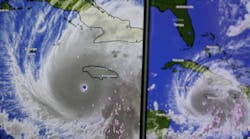
Beachgoers have a complex relationship with wild birds, whether they realize it or not. We’re often cautioned to avoid the water for a few days after a storm—the result of contamination by stormwater runoff. This bacterial contamination can have many sources, and these are sometimes difficult for stormwater managers to pin down. Culprits include urban stormwater runoff, leaking septic tanks, agricultural and livestock facilities, and even wildlife—particularly birds.
This month, though, the American Bird Conservancy is warning vacationers to avoid areas of the beach for a very different reason: to protect nesting and newly hatched birds. The habitat for beach-nesting birds is increasingly threatened by development, greater recreational use of beaches, and coastal erosion. With the slogan “Fish, Swim, and Play from 50 Yards Away,” the organization is trying to educate people about the dangers of trampling, running over, or simply scaring beach-nesting birds to the point where they abandon their nests. On some beaches, nesting areas are roped off or marked with signs, but that’s not always the case; the conservancy advises people to avoid any area in which they see a large congregation of birds.
Some of the birds are on threatened species lists, like the piping plover on the Atlantic coast. Other species include the least tern, black skimmer, American oystercatcher, and Wilson’s plover on the East Coast; the black oystercatcher, Western snowy plover, and endangered California least tern on the Pacific Coast; and the least tern and black skimmer on the Gulf Coast.
The conservancy acknowledges that it can be difficult for most people to distinguish between a nesting bird and one that just happens to be resting on the sand. Nesting areas tend to be landward in the dunes and away from the surf, but if in doubt, explains Kacy Ray, Gulf Conservation Program Manager for ABC’s Gulf Beach-Nesting Bird Conservation Program, “You know you’ve entered a nesting area when large groups or individual birds vocalize loudly, dive-bomb your head, or feign injury to lead you away from their nests. If this happens, back away.”
About the Author
Janice Kaspersen
Janice Kaspersen is the former editor of Erosion Control and Stormwater magazines.

